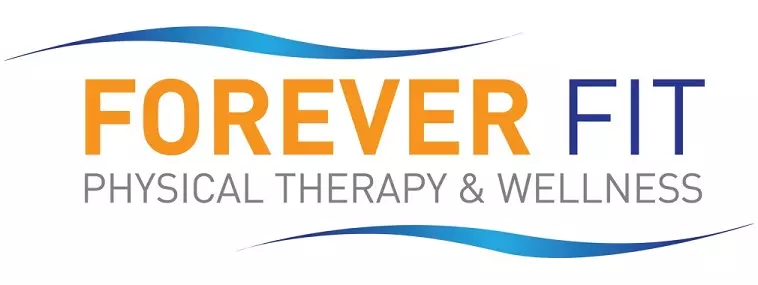Cortisone shots are commonly used to help relieve pain and inflammation in the joints. They are often used as part of treatment for inflammatory conditions such as osteoarthritis or rheumatoid arthritis. Cortisone injections are given for a number of other physical conditions as well, and based on current evidence these conditions also benefit from physical therapy alongside cortisone shots.
Whatever the reason for receiving a cortisone injection in your shoulder, it is important to be aware of how to properly care for your body after the injection. This includes knowing when to resume exercise and physical activity. Continue reading to learn what our team at Forever Fit recommends for resuming exercise after a cortisone injection in your shoulder.
What to expect after a cortisone injection in your shoulder
Cortisone shots can be an effective method for managing joint inflammation due to conditions like osteoarthritis, rheumatoid arthritis, tendinitis or bursitis. However, after a cortisone shot, you may experience a temporary increase in pain and inflammation. This can last up to 48 hours after the injection. After that, the pain and inflammation in your shoulder should decrease. This pain relief can last up to several months.
Other possible side effects include:
- Facial flushing or redness.
- A feeling of warmth in the face and chest.
- A temporary increase in blood sugar.
- Darkening of the skin around the injection site.
- Hardening and dimpling of the skin around the injection site.
The risk of these side effects increases with larger doses and repeated cortisone injections. In addition, frequent use of cortisone shots can increase your risk for joint infection, cartilage damage, nerve damage and thinning of the nearby bone.
For this reason, most doctors will limit the number of cortisone injections in your shoulder. Generally, you shouldn’t get cortisone injections more often than every six weeks and no more than three or four times a year.
When to start exercise again after a cortisone injection in your shoulder
After your injection, you should protect and monitor your shoulder for the next 48 hours. Take this time to rest and watch for potential signs of infection or possible complications. It’s important not to push yourself during this time, as most cortisone shots contain a numbing agent that may make it hard for you to feel that you are overworking your shoulder joint. Especially avoid any heavy lifting after receiving a cortisone injection in your shoulder.
After 10 to 14 days, you may start to do gentle range-of-motion exercises. You can remain as active as you can tolerate. However, if your pain becomes severe, stop the exercise and schedule a follow-up appointment with your doctor. Four weeks after the injection, you can start incorporating strength-building exercises back into your routine.
4 exercises you can do after a cortisone injection in your shoulder
While rest is an important step in recovering from a cortisone injection in your shoulder, exercise can help you regain some of your range of motion in your shoulder. Exercise can also help you recover some of the muscle strength you may have lost from resting or not using your shoulder due to pain and inflammation.
A physical therapist can design an exercise routine that will allow you to reach these goals in a safe way. Here are some exercises that a physical therapist may recommend after a cortisone injection in the shoulder:
- Pendulums — First, position yourself next to a table or countertop and place your unaffected hand on the surface. Bend over at the waist, allowing your affected arm to hang free. Gently shift your weight forward and backward or side to side, allowing your arm to sway with your body. It is important to keep your affected shoulder relaxed during this exercise and let the movement of your body and gravity generate the motion. This can be done as often as you find helpful for 30- to 60-second intervals.
- Wall slide/walk — Start facing a wall, ideally one without any pictures/obstacles, etc., and place your affected hand flat on the surface in front of you. Take a small step, shifting your weight forward while sliding your hand up the wall as far as you are able without increasing pain. Pause for a second or two at the top and then slide your hand back down. Repeat for five to 10 repetitions a few times a day. Tip: This can also be done in the shower.
- Serratus punch — Start lying on your back with your knees bent. Raise both arms up so your hands are stacked directly above your shoulders. Keep your elbows straight and gently push your hands up toward the ceiling. Relax your shoulders back to the starting position and repeat. Aim for 10 to 20 repetitions, keeping your elbows straight and making sure your shoulders don’t raise up toward your ears.
- Seated shoulder blade squeeze — Start seated in a chair and scoot forward so that your back is away from the back of the chair. Gently squeeze your shoulder blades together and then relax. Avoid sticking your chest out too far and try not to arch your back in the process. This exercise helps engage the muscles that stabilize your shoulder joint and can reinforce good posture. Do five to 10 repetitions frequently throughout the day to help improve your postural endurance.
Have questions about caring for your shoulder after a cortisone injection? Contact Forever Fit PT today
Exercise can be a great way to support your recovery from a cortisone injection in your shoulder. However, it’s important to do so in a safe way that won’t cause pain or inflammation to return. Our team of physical therapists can help guide you through your recovery and answer any questions you may have about resuming exercise after a cortisone shot.
Contact one of our Forever Fit locations today for more information on exercise after a cortisone shoulder injection, or to schedule an appointment.
